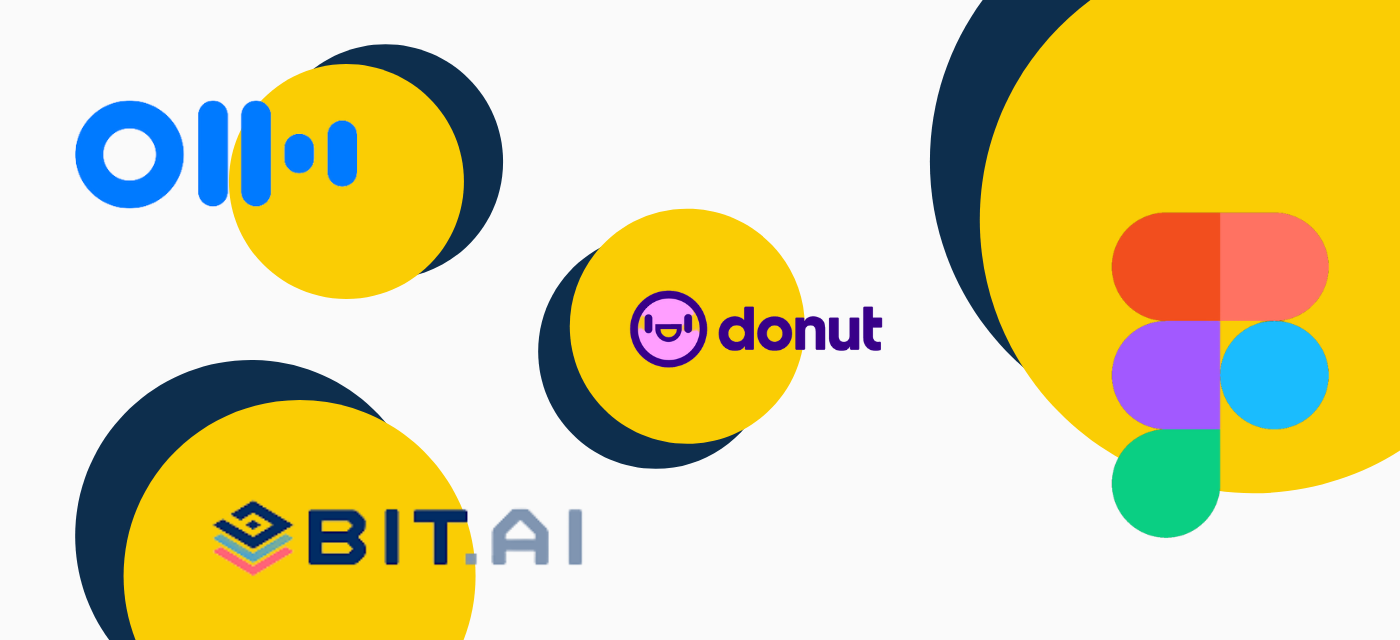You’ve heard the buzzwords: flexible work, hybrid roles, war on talent, the rather ominous sounding yet all too real ‘Great Resignation.’
But how are all these things linked?
88% of knowledge workers say that when searching for a new position, they will look for one that offers complete flexibility in their hours and location — they want to work when, how and where it’s most suitable for them to succeed. Companies that don’t offer hybrid or flexible roles are struggling to retain and attract top talent, and to say it simply, getting left behind.
As Anthony Klotz, the academic who coined the term Great Resignation, notes: people want jobs that offer the right “work arrangements in the longer term.”
The problem: Many organisations don’t know how to implement these new, flexible working arrangements without also introducing uncertainty, disruption and soaring expectations.
The good news: Technology is your flexible working friend. Don’t make life harder than it needs to be for your teams - these tech tools can improve workflow, structure, and communication while keeping both the company and talent happy with flexible working freedoms.
1. Beamible, the work design platform
Beamible is an obvious choice if you just look at the tagline. It’s a world first, cloud-based service with people-led work design at its core.
The SaaS platform enables genuine flexible work, talent mobility and seamless organisational design for small and large organisations by providing visibility into whether the right people are working on the right thing at the right time. All critical information to have when offering flexible working to your teams.
Garner the kind of essential data and analytics that organisations need for crucial business insights while talent can enjoy a high level of autonomy and design work that truly works for them — and, by extension, for the company.
Use Beamible to design roles and let team leaders and employees take an active part in this, allocate work, manage workloads, get greater visibility into how work is happening, and increase productivity. It’s a win-win for talent and the organisation.
Oh, and Beamible allows you to create part-time and job-share roles, which increases diversity and inclusivity and makes it easier to attract top talent. Not to mention, opens up an entirely new talent pool that other organisations won’t have access to.
Leading companies using Beamible
2. Otter
Otter AI is a clever little tool that uses artificial intelligence technologies to create transcriptions of video meetings and even phone conversations. As many flexible workers will tell you, it can be difficult to take notes and pay close attention to a Zoom call if you only have one screen.
The program’s Otter Assistant does the note-taking so you can concentrate on the big picture. Plus the tool’s transcriptions are easy to share, search, and organise.
We like Otter for several reasons, not least because having an Otter Assistant that seamlessly joins your meetings after reviewing your calendar is super convenient, but also because it cuts through a few accessibility barriers, enabling everyone to work smarter. People who are hard of hearing, deaf, or have dyslexia all find Otter helpful. We love to see an inclusive platform.
Leading companies using Otter
- UCLA
- Dropbox
- IBM
3. Slack
Slack by name but not by nature, this messaging platform has quickly become de rigueur in the world of flexible work. A solid communication strategy is a must for flexible work models, and Slack helps team members communicate across groups, and it allows people to indicate when they’re online or unavailable.
Create channels for internal and external matters, communicate one on one, tag people by name so they know they’re being mentioned and collaborate on big projects no matter how dispersed the workforce or what time zone you’re all in.
There are a number of other messaging platforms that do the same thing so this one is more about the general concept of direct messaging across groups, rather than Slack itself (though, this is the platform we use and love.) You could also try Microsoft Teams or Chanty.
Leading companies using Slack
- Shopify
- Udemy
4. Figma (and Canva)
These days, it doesn’t really matter what industry or sector a business is in, design principles matter. Clients, whether B2B or B2C, are increasingly critical of poor UX and UI, and these can make or break a business, especially a new one.
Figma is a collaborative design tool that can be used to create all sorts of things from web page wireframes through to logos and mobile app interfaces. We like Figma because all members of the team can see designs in progress and add their input. The platform brings the team together over a shared project while limiting who can make certain changes (no designers will be harmed in the making of a presentation or web page).
We would be remiss not to mention Canva in the collaborative design space, as it has completely and entirely changed the game for your everyday non-designers who need to… well, design. More recently, they’ve shifted towards a more collaborative vibe and have introduced similar sharing and team-based tools for flexible working.
Leading companies using Figma
- Airbnb
- BMW
- Zoom
5. Zoom
Now synonymous with video calls, Zoom is unique from other conferencing software programs like Skype because staff members do not need to download any software. Instead, a sharable link takes people to a browser-based meeting room.
Of course, you can also download the Zoom app to take advantage of the platform’s other features, such as fun backgrounds so team members aren’t given a view of one’s home. Perhaps the best thing about Zoom, though, is that it supports a large number of participants in one meeting.
There are a few things we don’t love about Zoom. The first being the potential for endless meetings (read more about that here). The second is the app can be a bit buggy and sluggish. Most larger organisations block it, but Google Meets is our personal favourite and standout choice for video conferencing so check that out too.
Leading companies using Zoom
- Western Union
- Cisco
- Salesforce
6. Airtable
Airtable is somewhat like a giant spreadsheet that can be used to organise and manage all sorts of tasks and projects collaboratively. Initially designed to help companies build and design applications, the low-code/no-code tool quickly became popular outside of the tech community because it’s highly versatile and there are numerous templates available for all manner of tasks.
Airtable has database technology at its core, which helps when you need to create powerful visualisations to give stakeholders context, secure funding, and so on. We like that Airtable bears some resemblance to Excel in the way it functions, it’s a familiar format that all team members are comfortable using.
Leading companies using Airtable
- JetBlue
- Expedia
- BuzzFeed
7. Donut
Progressive businesses have embraced flex work, and the Beamible team are happy to see dramatic changes to the outdated workweek, but we remain slightly sad to have lost the water cooler. You know, those snippets of small talk about a colleague’s weekend or their teenager’s latest shenanigans. In fact, this is one of the biggest elements missing from the flexible working domain.
Donut is bringing the water-cooler convo to the virtual realm. A Slack add-on, this collaborative tool helps remote team members get to know each other by randomly pairing team members and suggesting an in-person coffee or a virtual chat. Flex doesn’t have to mean fewer social interactions at work, and Donut facilitates these.
Leading companies using Donut
- InVision
- Culture Amp
- IBM
8. Pomofocus
The Pomodoro Technique is an approach to time management that involves working in 25-minute bursts followed by a short five-minute break. Not all of us are great at knuckling down and focusing while working at home on a flex schedule, and the answer very well might be tomatoes.
Pomodoro is Italian for ‘tomato’, and the technique was first developed by an Italian student who used a tomato-shaped timer to organise his study. Pomofocus is a free timer that’s accessible through a browser or a dedicated app, it’s a digital kitchen timer of sorts that helps optimise productivity. Do a few push-ups or yoga poses during your 5 minute break and this could double as a fitness goal - nice!
Leading companies using the Pomodoro Technique
- Ducati
- Oracle
- Nutralete
9. Bit.ai
You can think of Bit.ai as much like Google Docs on steroids. It’s a collaborative document management system that allows teams to create dynamic and digital-rich documents, notes and wikis. The secret to Bit.ai’s success is its interoperability: the platform is compatible with Google Sheets, Airtable, Figma and others, meaning each document can feature embedded rich media from these programs and over 100 other apps. This level of integration means less manual management of platforms, BONUS.
Besides document creation, the platform’s ‘content library’ is a handy place to store digital assets and ensure the whole team has access. We like that Bit.ai automatically organises the assets we use frequently and makes everything easy to find.
Leading companies using Bit.ai
- Canon
- Accenture
- Harvard University
10. Perkbox
Everyone loves getting gifts in the mail. Everyone. Part of a great employee value proposition (EVP) is making sure that team members feel valued for their work and efforts, and EVPs matter just as much in flex work organisations as they do in traditional office-based companies — if not more so, especially in the current talent climate.
Perkbox is a benefits and rewards platform that allows companies to provide their talent with perks such as discounts, freebies, exclusive deals and a range of well-being tools including guided meditation sessions and workout videos. Peer-to-peer rewards and recognitions are supported too, so team members can send each other perks.
Let’s be clear - gifting isn’t the ONLY component you should be focused on with your EVP (here’s more about what you need), but it is a good one to include.
Leading companies using Perkbox
- Bosch
- Krispy Kreme
- CBRE
Is your organisation flex ready?
A war is afoot, one where increased competition for highly skilled and knowledgeable staff is sorting the proverbial workplace wheat from the chaff. Compounding this we have the Great Resignation (aka the Big Quit) where post-pandemic, people are refusing to stay in roles that don’t match their values, and flexible work options are high on the list.
Getting ready for flex is the key to business success in the post-Covid world. If your organisation isn’t quite there yet, we can help you make the transition.
Beambile is more than just an innovative platform (we are that too, though), we’re also a flex-work consultancy that helps businesses adapt to the new ways of working, add value, and retain their talent, from new recruit to executive-level.
Ready to make your business Beamible? Let’s chat.





